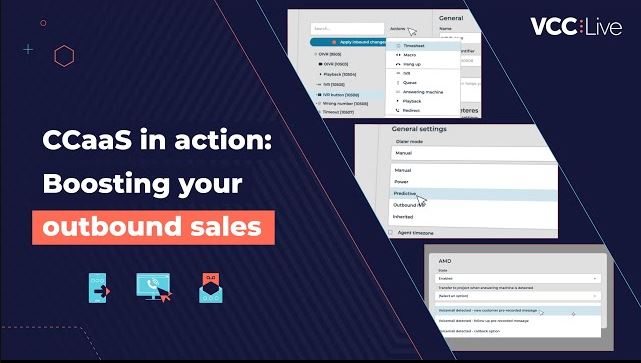Installing fixed telephony lines for your business used to be (and perhaps still is) a default decision for both small, and large players out there. But of course replacing everything with VoIP is now also a 100% valid option from both technical and human standpoint. Here’s what you should know about different telephony systems you have access to today to make sure you get the most out of voice communication in your business.
The past
PSTN, or Public Switched Telephone Network, consists of cables, telephone lines, optic cables, cellular and microwave transmitters, and other similar types of devices and technology that helps connect telephone devices with each other. Although a big part of this network today is now entirely digital, and includes mobile phones as well as fixed telephones, it was not long ago that the construction of such a network required the complex planning and laying of physical cables and switches to connect any two devices. The network operated by setting a dedicated circuit between two points, this circuit remaining busy for the duration of the subsequent call.
But as technology evolved, the Integrated Services Digital Network, or ISDN, appeared, its Primary Rate Interface technology allowing companies and contact centres to handle up to 30 circuits (in other words 30 simultaneous calls) with one ISDN at the same time, with the ability to link two or more ISDN modules together to handle 60, 90, or even more calls at the same time. And while this technology allowed companies and contact centres to enjoy a reliable and resilient telephone network for a number of years, the sudden appearance out of nowhere of VoIP changed the game again.
On the other hand, Voice over Internet Protocol (also known as internet telephony) is a technology used to deliver voice and multimedia communications over the internet. Even though internet technology is very advanced today, with many areas of the world leveraging the benefits of constant, stable internet connection, when VoIP technology first started to spread the biggest and most common issue was poor voice quality due to internet issues. VoIP became a better known technology after programs and applications using it, such as Skype, started gaining popularity, but these programs also required a stable internet connection at both ends and often did not provide high-quality voice service. Even today, many companies believe that VoIP goes hand in hand with poor voice quality, and is dependent on internet speed and network load. Despite this, though, more and more companies are transferring their network operations from PSTN to VoIP. Why?
The present
Even though VoIP has been around for a while, it has only recently started to be able to offer the level of reliability and stability that customers expect of it. In comparison to PSTN networks, VoIP uses packet-switching rather than circuit switching, meaning that one’s voice is divided into different packets that are transmitted to the receiving party on the other end of the telephone line using different paths over the internet. All of this happens in a very short time, and even though these packets travel separately, the voice is assembled again at the receivers end in a right and intelligible order. To make sure that the voice packets arrive in the exact order, and with only around 100-200 ms of lateness, a service with a high level of quality is crucial. To achieve this, VoIP communications within a network need to either be prioritised in comparison to other applications of processes using the same network, or a minimal internet traffic setting dedicated especially to the VoIP service needs to be specified, allowing the necessary background and environment for a seamless VoIP service.
Today, IT and service providers are more than able to provide a seamless VoIP service without the need for serious investment or infrastructure. As a VoIP service is packet-based and can travel via the network of any number of service providers in a number of different packets, it is always easy to route. If one of the service providers is down, the packets can simply be transferred to another, and will still arrive at their destination (you can read more about what to do in the event of an emergency or server breakdown here). This is something PSTN, which connects two points in a circuit, will never be able to do. In addition to this major difference between the technologies in question, what other differences are there between the two networks?
| Feature |
PSTN |
VoIP |
|
Extra services (caller ID, waiting, etc.)
|
At extra cost. |
Usually included for free. |
| Pricing |
No free calls. Prices depend on duration and location (international, local, etc) |
Free VoIP-to-VoIP calls. Mobile and landlines can be called at a minimal price. |
| Upgrades and updates |
Physical, including new hardware and lines. |
Software and bandwidth. |
| Resiliency and disaster recovery |
Stable and continue to work during any loss of power as phone jacks do not require electricity (unless the devices are wireless). |
System is down once an internet connection is lost, which can be caused by unexpected power outages. A VoIP disaster recovery plan is needed. |
| Emergency calls and traceability |
Enabled, calls can be traced to exact location. |
Not provided or very limited with no traceability. |
The future
We live in a world where both clients and customers expect more from their service providers – faster operations, higher quality and wider choice, all at a better price. As we already talked about in a previous article, these days delivering the best customer experience is your best chance of staying ahead of the competition.
With the introduction of a new technology innovation, this constant motivation for service providers to achieve and provide more is about to bear new fruit. VoLTE (Voice over Long-Term Evolution) is a new standard for high-speed wireless communication, providing HD voice quality, reduced background noise, and many other important features and benefits of interest to those who believe in the importance of voice and data transfer quality.
The development and use of this technology started in Asia in 2014 and is fast spreading across the world. Even though specialists in the field believe that it will need at least 1-2 more years before it becomes an industry standard, VoLTE has been received extremely well so far and is already proving its benefits in comparison to 2G and 3G networks. For example, VoLTE offers:
– bigger capacities for data and voice, being able to process up to 3 times more voice and data amounts compared to 3G
– video and content sharing. VoLTE allows for easy and immediate streaming of video and sharing of files immediately during any call. No need for third-party file sharing software or service, or video call programs and equipment – just drag and drop files within the call window.
– more stable data. In today’s business world, people multitask, and in order to multitask efficiently they need a stable connection – not only phone but online as well. VoLTE allows users to connect their laptops or tablets to the VoLTE network and enjoy a fast internet connection while being on call at the same time.
Another important technology gaining wide acknowledgment and spreading fast is WebRTC. WebRTC is an open source project that enables real-time peer-to-peer communication over audio and video, as well as file and screen sharing over web. It uses Real-time Transport Protocol, and allows users using this technology to instantly start audio and video conferencing, transfer files, and share their screens without the need of any third-party programs or applications. It is anticipated that this technology will considerably influence telecommunications in the business world, and is a direction into which many companies are planning on venturing or are already developing the needed technological background.
Times change and with them so does technology. While years ago PSTN was (and in some cases still is) the stable backbone of every business, and VoIP was a synonym for low voice quality, today the preferred network standard is quickly shifting. Even though there are still regions in the world where the internet does not yet provide the needed speed and stability for a seamless VoIP service, in most locations a fast and stable connection is already a basic element of business. Regions lacking solid SIP services and a reliable connection can provide seamless services with the help of a solid PSTN solution. ‘But companies in areas where VoIP can be implemented should also seriously consider the benefits of today’s and tomorrow’s alternative telecommunications technology options.















